#Cécile Rol-Tanguy
Photo

Cécile Rol-Tanguy, one of the great figures of the French resistance.
By Robert Gildea
Cécile Rol-Tanguy, who has died aged 101, was one of the great figures of the French resistance. She came from a communist family and worked in tandem with her husband, Henri Rol-Tanguy, who led the irregular French forces in the Paris insurrection of August 1944. Long in his shadow, she came into her own as a veteran and voice of the resistance in the years after his death in 2002.
Her father, François Le Bihan, a Breton who had worked in Les Halles market in Paris, joined the navy, trained as a radio electrician and met his wife, Germaine Jaganet, while based at Royan in the south-west of France at the end of the first world war. Returning to Paris, he joined the French Communist party (PCF) as soon as it was founded in 1920.
Cécile, who was born in Royan, was brought up in an environment dedicated to international communism. Her family’s home sheltered political exiles from Italy, Germany, Hungary, Czechoslovakia and Yugoslavia, and as a girl Cécile joined the Jeunes Filles de France, set up by the PCF. In 1936, aged 17, she found a job as a shorthand typist in the engineers union of the Confédération Générale du Travail. There she met Henri Tanguy, a Breton like herself, who had been repeatedly sacked from car factories for fomenting strikes and now worked as a permanent official for the union.
Cécile and Henri were soon plunged into the maelstrom of what they saw as a war between fascism and communism. When the Spanish civil war broke out in 1936, Henri went to fight in the International Brigades while Cécile worked with the Aid for Spain Committee and wrote him letters as his “war godmother”. Henri claimed to be a revolutionary who would never marry, but they wed in 1939. When the second world war broke out Henri was sent to the front at Sarrebourg, then to a factory in the Pyrenees as a skilled worker.
Cécile’s father was arrested as a communist in 1940 and her first child, Françoise, died as a baby in the same year, just as the German army closed in on Paris. Instead of collapsing, she decided to resist. “I had nothing left,” she said in a 2012 interview. “My father had been arrested, I didn’t know where my husband was, and I had lost my little girl. What could hold me back?”
Henri became an underground communist resister, first for the Organisation Spéciale, then the Franc-Tireurs et Partisans (FTP). Cécile typed flyers and acted as his liaison agent, keeping the resistance network together and replacing those who were arrested.
Resistance was extremely dangerous. Those who fell into the hands of the Vichy or German authorities risked deportation or execution. Cécile’s father escaped after his arrest but was recaptured in 1941 and deported the following year to Auschwitz, where he died.
After two comrades were arrested in the autumn of 1942, Henri was sent away to the Poitiers area for six months. Cécile stayed in Paris with her mother, who, when necessary, cared for their two children, Hélène and Jean. Henri returned to Paris in the spring of 1943 and was appointed FTP chief in the Paris region, working with the Polish-Jewish resister Joseph Epstein. Cécile liaised between them and also with Boris Holban, the Romanian-Jewish leader of the Paris FTP-MOI, which mobilised communists of foreign origin. Epstein was arrested and executed on 11 April 1944.
In June 1944 Henri became Paris head of the Forces Françaises de l’Intérieur (FFI), which brought together communist and non-communist irregulars. He adopted the nom de guerre of Rol after a comrade killed in Spain.
On 14 August 1944, Cécile took Henri’s machine gun from one part of Paris to another, avoiding German road blocks, while her mother took flyers in Jean’s pram and Hélène danced along the pavement. At dawn on 19 August the insurrection order signed by Henri was posted across Paris.
The liberation of Paris covered Henri in glory but General Charles de Gaulle was determined to reassert his own power and to prioritise the role of the Free French forces, which he had founded and which had fought outside France until they entered Paris under General Philippe Leclerc on 24 August 1944.
On 27 August, the day after he walked down the Champs-Élysées to rapturous crowds, De Gaulle invited 20 leaders of the internal resistance to the War Ministry. Each was tersely thanked before the general dismissed him with “Good. Next!” Cécile was the only woman present. “Personally, I did not find it very welcoming,” she recalled. “It was a very small reception, without even a glass of wine to finish with.”
The internal resistance was humiliated because it had a large communist contingent and because it detracted from De Gaulle’s personal glory. Henri continued in the army proper and fought his way to Germany, but he was then given a military desk job in Versailles.
Commemorations always celebrated the role of the Free French and of Leclerc in particular. On one occasion Cécile told the mayor of Paris, Jacques Chirac, that not giving her husband a seat in the front row of such commemorations was “an affront to history”.
In recent years Cécile enjoyed greater recognition. She became co-president of the Friends of the Spanish Republican Fighters, set up in 1996, of which her daughter Claire was general secretary. Frequently she gave talks in schools about the resistance, becoming the star turn after the death of Lucie Aubrac in 2007. In May 2014 she spoke at a conference to mark the 70th anniversary of the Liberation at the French Institute in London. She was made a Grand Officier de la Légion d’Honneur in 2014 and was awarded the Grande Croix de l’Ordre National du Mérite in 2017.
She is survived by her four children, Hélène, Jean, Claire and Francis.
• Cécile Rol-Tanguy, French resistance agent, born 10 April 1919; died 8 May 2020
© 2020 Guardian News
Daily inspiration. Discover more photos at http://justforbooks.tumblr.com
16 notes
·
View notes
Audio
(Mosaik Radios)
0 notes
Photo
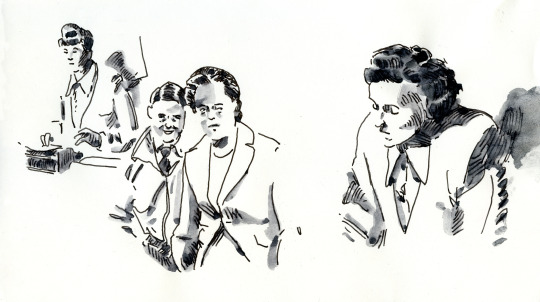
Cécile Rol-Tanguy, 10 avril 1919 - 8 mai 2020.
6 notes
·
View notes
Text
learning combat
July 9, 1944 - 8:37 pm
Earlier today, Colonel Rol told some of us people who were working in the communications area to go and learn a bit of combat training. Both Helene and I were confused as to what was happening. We didn’t need any combat training, as far as we could tell. We’ve been working in communications smoothly and there seemed to be not much use to learn combat.
We had to take a train to the countryside, rural area of France. These are the areas where some of the resistance fighters fled to. But since Helene and I were working on the newspaper, it wasn’t right for us to flee Paris. When we were there, we learned how to fight hand-to-hand as well as how to handle guns. Using a gun was actually a lot of fun.
I later asked Cécile Tanguy (Colonel Rol’s wife) why we were doing this and she said “to prepare us for the Liberation, of course.” I was shocked. I knew that we were probably going to be saved soon, but I had no idea that we, resistance members would be the ones fighting.
Yet despite it, I know that I am ready to fight. To fight for my country. To fight for my Papa and for Augustin. I am ready to fight.
- Sophie Blanchet
0 notes
Photo

“Un Couple dans la Résistance Parisienne, Cécile Rol-Tanguy et son Mari” conférence en ligne présentée par Françoise Le Goaziou à la Mission Bretonne - Ti Ar Vretoned, Paris, mai 2021.
0 notes
Photo
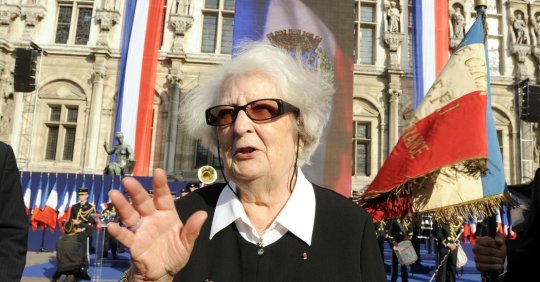
Cécile Rol-Tanguy, French Resistance Fighter, Dies at 101 Cécile Rol-Tanguy, a heroine of the French Resistance who helped lead a popular uprising against the German occupation of Paris, died on May 8 at her home in Monteaux, about 130 miles from Paris.
0 notes
Photo
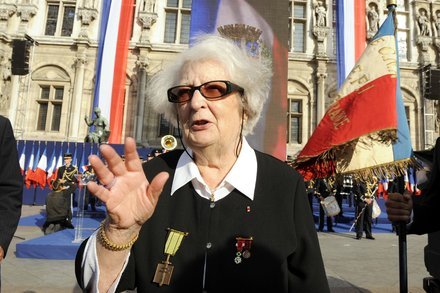
"Cécile Rol-Tanguy, French Resistance Fighter, Dies at 101" by BY EVA MBENGUE via NYT World https://ift.tt/3cKVHCQ
0 notes
Photo
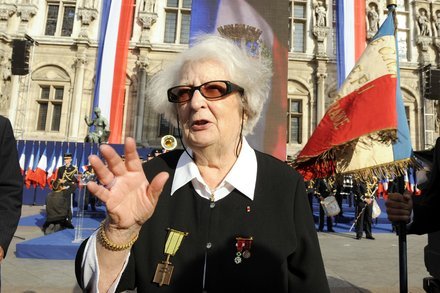
"Cécile Rol-Tanguy, French Resistance Fighter, Dies at 101" by BY EVA MBENGUE via NYT World https://ift.tt/3cKVHCQ
0 notes
Text
0 notes
Text
Museum of the Liberation of Paris
Façade of the Musée de la Libération de Paris-Musée du Général Leclerc-Musée Jean Moulin
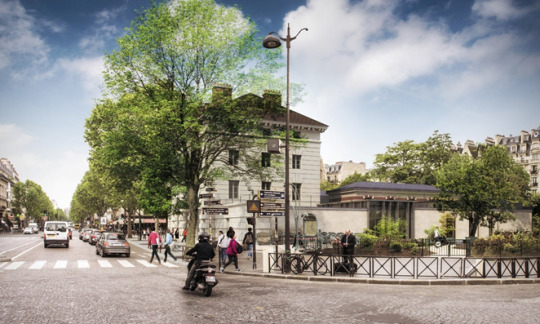
The tunnel to the subterranean bunker that played a pivotal role in the liberation of Paris is long and narrow, each step down deceptively steep.
It takes 100 of those steps to reach the former military command post where, for six days, members of the French Resistance helped orchestrate the city’s release from the Nazi occupation in 1944.


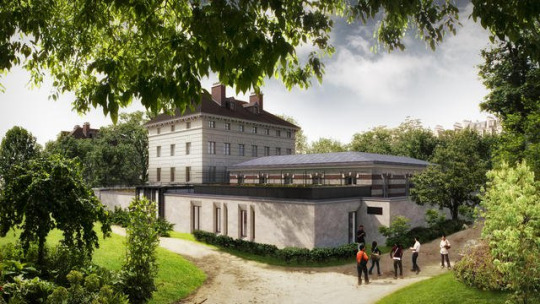
For decades after the liberation, the bunker, in the southern end of the city, languished in neglect, abandoned and visited only by urban sewer explorers or tagged and occupied by squatters.
But on Aug. 25, when the French capital marks the 75th anniversary of its liberation during World War II, the newly restored underground shelter was inaugurated as part of the redesigned and relocated Musée de la Libération de Paris-Musée du Général Leclerc-Musée Jean Moulin — an unusually long name aimed at honoring key heroes of the French Resistance.
Above and below ground, the museum walks visitors through one of the darkest and most joyous periods of modern Parisian history, from the calamitous moment France fell and German forces captured Paris in 1940, to the moment the city was liberated four years later by the Resistance and Allied forces.
The Musée de la Libération had previously operated in near obscurity above the Montparnasse train station and was little known among Parisians, much less tourists. Visitor numbers were dismal.
Now a few steps from the catacombs, the hope is that the bunker will help the museum become a new tourist attraction in the 14th arrondissement — one that preserves the memory of an important moment in Paris history.
During their tour, visitors learn that the bunker was originally opened in 1938 as an air raid shelter, and that its existence was known to the German army. What the Germans didn’t know, however, was that the Resistance, led in Paris by Col. Henri-Rol Tanguy, would take it over in the week leading up to the liberation, and use it as a command post and communications hub. Equipped with its own telephone exchange, the shelter gave Colonel Rol-Tanguy and his staff access to 250 telephones around Paris, including at police headquarters and in air raid shelters, allowing them to bypass official communication lines that were likely to be tapped. It also served as an effective hide-out, as messengers gained access via the nearby railway line, either to deliver intelligence or receive new orders from Colonel Rol-Tanguy.
A continuous soundtrack overhead brings the command post to life, playing recordings of sounds often heard during the war: a haunting wail of the air raid siren; shrill, strident rings of old-fashioned telephones; calls from members of the Resistance; the click-clack sound of running footsteps that conveys a hair-raising sense of urgency.
The restored “disinfection room” near the entrance where victims would have been treated in the event of a gas attack; vintage gas masks; and the stationary bike used to generate electricity in the event of a power shortage all serve as stark reminders of the realities of war. The bunker also recreates the room that housed the telephone switchboard and the office where Colonel Rol-Tanguy would read reports and dictate messages to his wife and secretary, Cécile Rol-Tanguy, also a member of the Resistance.
Above ground, more than 300 artifacts are on display, including new additions, such as pistols used by soldiers in the 2nd French Armored Division led by Philippe Leclerc de Hauteclocque (better known as Général Leclerc), and a red, white and blue dress bearing images of the Eiffel Tower and the Arc de Triomphe. The Parisian wife and mother Marguerite Sabaut wore the dress for the victory parade down the Champs-Élysées on Aug. 26, 1944.

Marguerite Sabaut made this red, white and blue dress and wore it during the celebratory parade down the Champs-Élysées on Aug. 26, 1944.
The redesigned museum also pays tribute to Général Leclerc and Jean Moulin, who were key architects of the French Resistance. Under Gen. Charles de Gaulle, Moulin would unify the Resistance across France, coordinating efforts with local factions across the country. Leclerc would lead the liberation of Paris with his 2nd French Armored Division and the help of Allied forces, dealing the final blow to the Germans.
0 notes
Text
Paris Basement Used as WWII Resistance Headquarters Transformed Into Museum Centerpiece
https://sciencespies.com/history/paris-basement-used-as-wwii-resistance-headquarters-transformed-into-museum-centerpiece/
Paris Basement Used as WWII Resistance Headquarters Transformed Into Museum Centerpiece
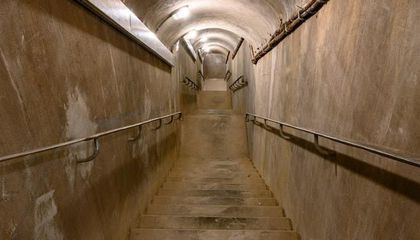
On New Year’s Day 1942, a former government official named Jean Moulin parachuted into Nazi-occupied France on the orders of General Charles de Gaulle, leader of the Free French movement. His mission—penned on a microfilmed document tucked inside of a matchbox—was to “bring about, within the zone of metropolitan France, … unity of action by all elements resisting the enemy and his collaborators.”
Over the next year and a half, Moulin followed this directive with unmatched persistence, leading domestic resistance efforts by founding a covert press service, creating a secret army of paramilitary forces and organizing a National Council of Resistance that united members of 15 different activist groups. Soon after this triumph, the operative was betrayed to the Gestapo; despite undergoing three weeks of brutal torture, he never yielded any information on the Resistance.
This Sunday, the 75th anniversary of Paris’ liberation from German forces, the French capital is recognizing Moulin’s legacy with the opening of the redesigned and relocated Musée de la Libération de Paris-Musée du Général Leclerc-Musée Jean Moulin. Named after the Resistance leader and a similarly towering figure in the country’s World War II lore—Philippe Leclerc de Hauteclocque, a general who led his troops from Africa to Normandy and finally Paris—the museum honors both the individuals referred to in its lengthy title and the thousands of lesser-known Resistance fighters who helped secure Paris’ freedom on August 25, 1944.




There are 100 steps leading down to the underground bunker
(Pierre Antoine)
More
As Jon Henley reports for the Guardian, the Musée de la Libération previously existed as an obscure, undervisited space above the Montparnasse station. Comparatively, the newest iteration boasts a central location near the Catacombs of Paris, ample exhibition space, and, most impressively, the subterranean command post where Colonel Henri Rol-Tanguy, his wife Cécile and fellow Resistance members made battle plans for the city’s liberation.
According to Vivian Song of the New York Times, the basement headquarters, restored to prominence as the museum’s centerpiece, was originally used as an air raid shelter. The week before Paris’ liberation, however, Colonel Rol-Tanguy requisitioned the shelter and transformed it into a Resistance hub, installing a telephone exchange capable of bypassing tapped lines and welcoming operatives in need of a hiding place.
Today, Song reports, those visiting the underground bunker will find ample evidence of the site’s historic past: The sounds of air raid sirens, old-fashioned telephones and agents hurrying down the 100 steps needed to reach the basement emanate from speakers, while a nearby “disinfection room” built to treat victims of gas attacks houses such reminders as vintage gas masks and a stationary bike that would have been used to generate electricity during power outages.
Above the shelter, more than 300 artifacts await. A significant number of artifacts also revolve around everyday Parisians’ lives: There’s a child’s ration card-filled wallet, a wooden-soled shoe, a patriotic dress stitched to celebrate liberation and propaganda posters produced by the collaborationist Vichy government. In an interview with Virginie Janniè of French outlet C News, museum director Sylvie Zaidman says that curators also worked against presenting an idealized vision of Paris’ liberation. Instead, Zaidman says, the museum’s narrative also shares darker aspects of that history, from participants’ excesses to the “spirit of revenge” that triggered harsh retaliation against known or presumed collaborationists.
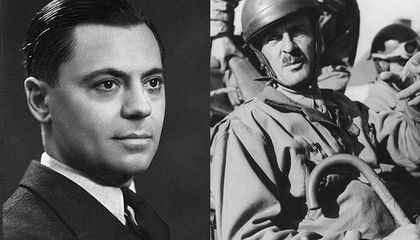
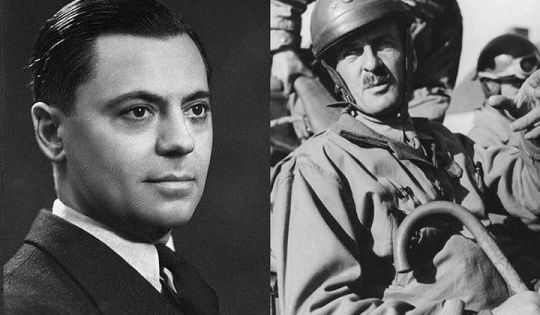
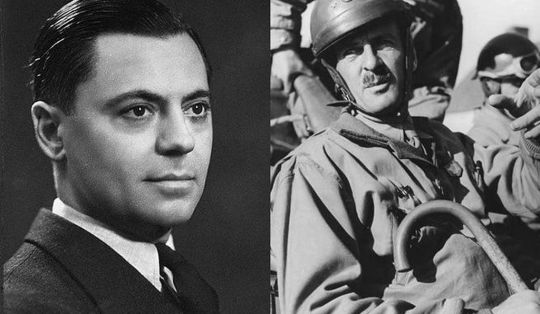

Jean Moulin, seen on left, spearheaded domestic resistance efforts, while General Leclerc, on the right, led troops from Normandy to Paris
(Public domain)
More
At its core, though, the Musée de la Libération strives to commemorate two individuals who pursued a common goal via varying routes. Many artifacts relate to the men honored by the museum’s name, including Moulin’s skis, the suitcase he was carrying on his last trip from London to France, and artistic accoutrements he acquired to support his cover as a gallerist, as well as General Leclerc’s walking cane and British identity papers.
Moulin, the domestic resistance organizer, died en route to Germany July 8, 1943, while Leclerc, a military leader whose 2nd Armored Division aided the fight for Paris’ freedom, died in a plane accident in 1947. “They never actually met, and they were very different people,” Zaidman tells the Guardian. “But when France fell in 1940, they made their choice—they would continue the fight, one inside their homeland, and one outside. Their common objective was France’s liberation, with a liberated Paris its greatest symbol.”
#History
0 notes
Text
Coronavirus Inquiry, E.U. Fund, Cyclone Amphan: Your Wednesday Briefing
(Want to get this briefing by email? Here’s the sign-up.)
Good morning.
We’re covering the W.H.O. approving a coronavirus inquiry, Germany and France joining forces and Italy’s Great Beautification as salons reopen.
The resolution calls for an “impartial, independent and comprehensive evaluation” of the international response to the outbreak. But it fell short of what the U.S. wanted, which was a thorough review of the Chinese origins of the virus and the W.H.O.’s actions in response.
President Trump threatened to permanently end U.S. funding for the W.H.O. unless it committed to “substantive improvements within the next 30 days,” accusing the organization of an “alarming” dependence on China.
Explainer: What we know about the coronavirus-related inflammatory disease affecting children, which is rare and easy to spot.
Germany puts Europe first to fight virus
Chancellor Angela Merkel’s decision to back a 500 billion-euro recovery fund on Monday broke with two German taboos: the transfer of funds from richer countries to poorer ones, and the borrowing of money by the European Union as a collective.
The decision will not be popular in Germany and may fuel populist opponents, our diplomatic correspondent in Brussels writes. But faced with Europe’s cratered economy, Ms. Merkel has joined with President Emmanuel Macron of France to prioritize the European Union’s future.
Looking ahead: With Britain gone, Germany and France, which have Europe’s largest and most powerful economies, have more room to assert themselves if they can find common ground.
Quotable: “We need to get a little bit outside our bubble,” said one Swedish director for the Atlantic Council who supported Ms. Merkel. “These are exceptional times, and you need to make exceptions from your principles. People are suffering.”
If you have 4 minutes, this is worth it
In Hong Kong, life goes on
Hong Kong was one of the first places outside mainland China to be hit by the coronavirus, and the landscape of the city changed immediately: Temperature checks, sanitizing and reminders to stay vigilant cropped up everywhere.
Four months later, those signs remain. But the city is humming back to life — not really in spite of those reminders so much as alongside them, writes our correspondent.
Here’s what else is happening
Cyclone Amphan: Hundreds of thousands of people have been evacuated from India and Bangladesh before one of the most powerful storms in decades makes landfall as expected on Wednesday afternoon.
Afghanistan: The security forces bombed a clinic in Kunduz on Tuesday to thwart a coordinated run by the Taliban on the provincial capital that the militants continue to besiege. The conflict is back into full-fledged bloodletting after a brief period of hope.
Snapshot: Above, a hair salon in Milan that reopened on Monday. Italians flooded salons for months-delayed haircuts, manicures, waxing and more — a chance for the Great Beautification ahead of summer, our Rome bureau chief writes.
In memoriam: Cécile Rol-Tanguy, a French resistance fighter who helped lead an uprising against the German occupation of Paris, died on May 8 at 101.
What we’re reading: This article in The Cut about how much wellness right now has to do with wealth. It’s a fascinating look at the increasing divide in what health means for different sectors of the population.
Now, a break from the news
Dubrovnik, Croatia
DARKO PEROJEVIC, 41, is the chef and owner of the restaurant Azur. He has lived in Dubrovnik most of his life.
The Old Town of Dubrovnik, where I’ve lived most of my life, hasn’t been empty like this since the war and the eight-month shelling of Dubrovnik in 1991 and ’92. We all have had some lingering sadness because the emptiness of the city is a reminder of that time.
The situation here is bittersweet, really. Bitter because I’m the chef and owner of a restaurant in Old Town — called Azur — that relies on a lot of tourists for business. But it’s sweet because walking the empty streets on a sunny day feels great.
Kids are playing on the streets just like I did when I was a kid. For a moment it feels like we got the city back for ourselves.
Halong Bay, Vietnam
LIND NGUYEN, 29, along with her husband, Trung, own the Wander Station restaurant.
On May 1, it was the [Labor Day] holiday and it’s supposed to be busy everywhere, but then we are empty, we have no customers, so I decided to close and have a look around. Everywhere was empty, the road, the stores, the walking street, everything. Like a scary movie.
In normal life there’s supposed to be hundreds of boats cruising in the bay, music playing — pum, pum, pum — and people having beer outside and walking around. But now no more.
I’m sad and worried. How long does it take to get back to the normal life? I just want tourists back here, meeting up, chatting and having fun.
That’s it for this briefing. Remember fun conversations? See you next time.
— Isabella
Thank you
To Melissa Clark for the recipe, and to Theodore Kim and Jahaan Singh for the rest of the break from the news. You can reach the team at [email protected].
P.S.
• We’re listening to “The Daily.” Our latest episode is on President Trump’s purging of watchdogs at U.S. federal agencies.
• Here’s today’s Mini Crossword puzzle, and a clue: Worker in Santa’s workshop (three letters). You can find all our puzzles here.
• The Times is commemorating the 100th anniversary of women getting the right to vote in the U.S. with a digital events series.
Source link
قالب وردپرس
from World Wide News https://ift.tt/2LK4OIk
0 notes
Text
Cécile Rol-Tanguy, French Resistance Fighter, Dies at 101
Passing through Nazi checkpoints in disguise, she carried machine guns and hand grenades to members of the underground.
0 notes
Text
Cécile Rol-Tanguy, French Resistance Fighter, Dies at 101
Passing through Nazi checkpoints in disguise, she carried machine guns and hand grenades to members of the underground.
from World News Passing through Nazi checkpoints in disguise, she carried machine guns and hand grenades to members of the underground. May 19, 2020 at 09:08PM
via IFTTT
0 notes
Text
Cécile Rol-Tanguy, French Resistance Fighter, Dies at 101
Passing through Nazi checkpoints in disguise, she carried machine guns and hand grenades to members of the underground.
0 notes
Text
Cécile Rol-Tanguy, French Resistance Fighter, Dies at 101
Cécile Rol-Tanguy, French Resistance Fighter, Dies at 101
Cécile Rol-Tanguy, a heroine of the French Resistance who helped lead a popular uprising against the German occupation of Paris, died on May 8 at her home in Monteaux, about 130 miles from Paris. She was 101.
Her family announced the death.
Ms. Rol-Tanguy joined the Resistance at age 21, after the Nazis moved into Paris.
She acted as a clandestine liaison officer for her husband, Henri…
View On WordPress
0 notes